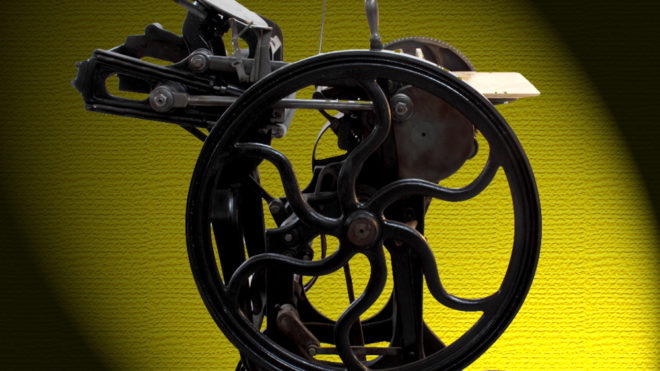Most of us tend to take printed materials for granted, but imagine life today if the printing press had never been invented. We would not have books, magazines or newspapers. Posters, flyers, pamphlets and mailers would not exist. The printing press allows us to share large amounts of information quickly and in huge numbers.
In fact, the printing press is so significant that it has come to be known as one of the most important inventions of our time. It drastically changed the way society evolved.
Inspiration and Invention of the Printing Press
Around the late 1430s, a German man named Johann Gutenberg was quite desperate to find a way to make money. At the time, there was a trend in attaching small mirrors to one’s hat or clothes in order to soak up healing powers when visiting holy places or icons. The mirrors themselves were not significant, but Gutenberg quietly noted how lucrative it was to create mass amounts of a cheap product.
During the 1300s to 1400s, people had developed a very basic form of printing. It involved letters or images cut on blocks of wood. The block would be dipped in ink and then stamped onto paper.
Gutenberg already had previous experience working at a mint, and he realized that if he could use cut blocks within a machine, he could make the printing process a lot faster. Even better, he would be able to reproduce texts in great numbers.
Gutenberg’s Press, Movable Type
Instead of using wood blocks, Gutenberg used metal. This became known as a “movable type machine,” since the metal block letters could be moved around to create new words and sentences.
With this machine, Gutenberg made the very first printed book, which was naturally a reproduction of the Bible. Today the Gutenberg Bible is an incredibly valuable, treasured item for its historical legacy.
Impact of the Printing Press
Gutenberg’s invention made a dramatic impact when it reached the public. At first, the noble classes looked down on it. To them, hand-inked books were a sign of luxury and grandeur, and it was no match for the cheaper, mass-produced books.
Thus, press-printed materials were at first more popular with the lower classes. When word spread about the printing press, other print shops opened and soon it developed into an entirely new trade. Printed texts became a new way to spread information to vast audiences quickly and cheaply. Academics benefited from this dissemination of scholarly ideas and even politicians found that they could garner the public’s interest through printed pamphlets.
An important side effect was that people could read and increase their knowledge more easily now, whereas in the past it was common for people to be quite uneducated. This increased the discussion and development of new ideas.
Another significant effect was that the printing press was largely responsible for Latin’s decline as other regional languages became the norm in locally printed materials. The printing press also helped standardize language, grammar, and spelling.

